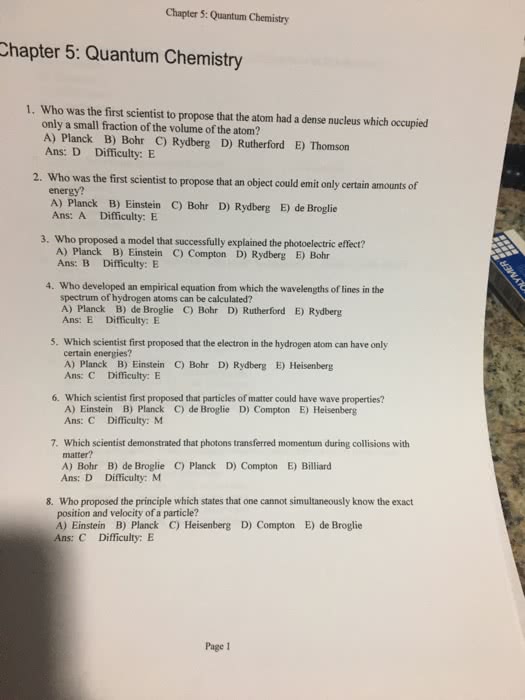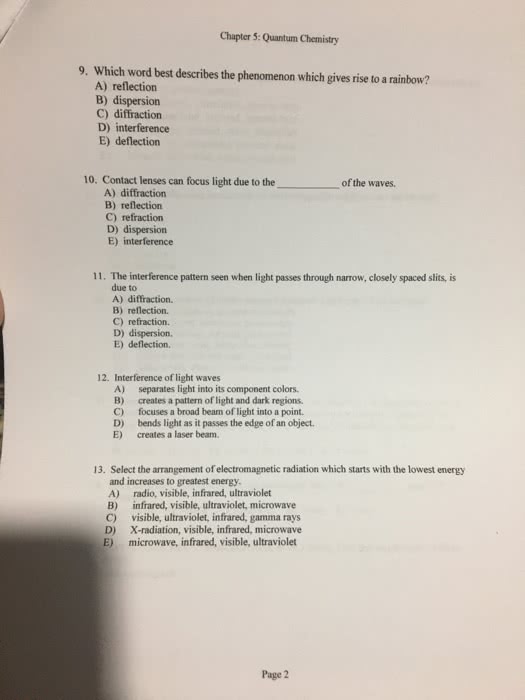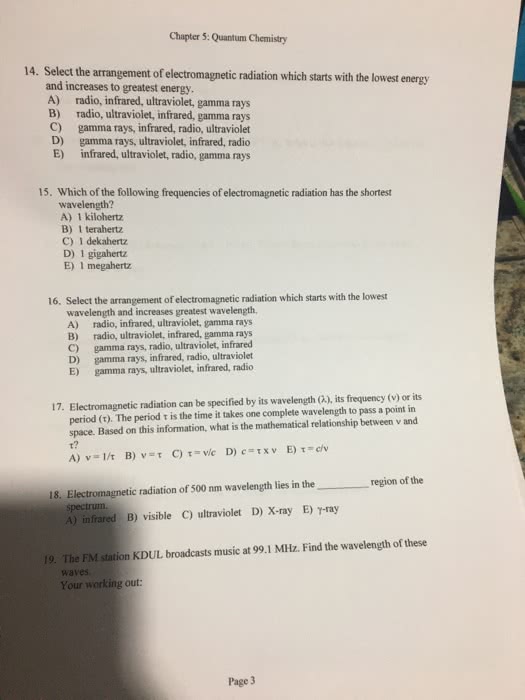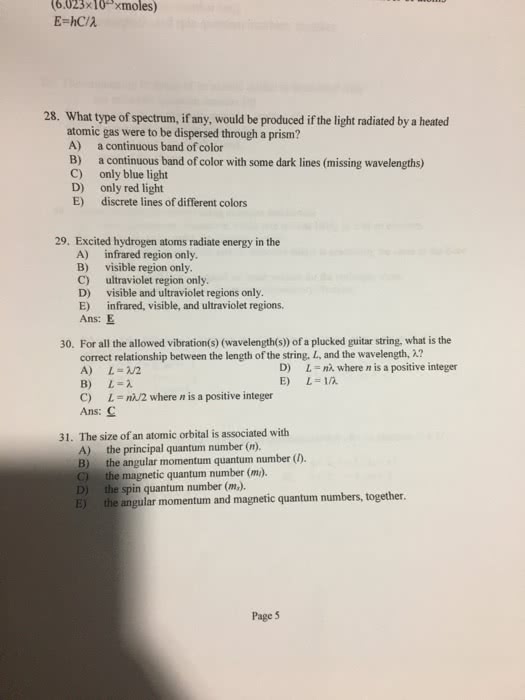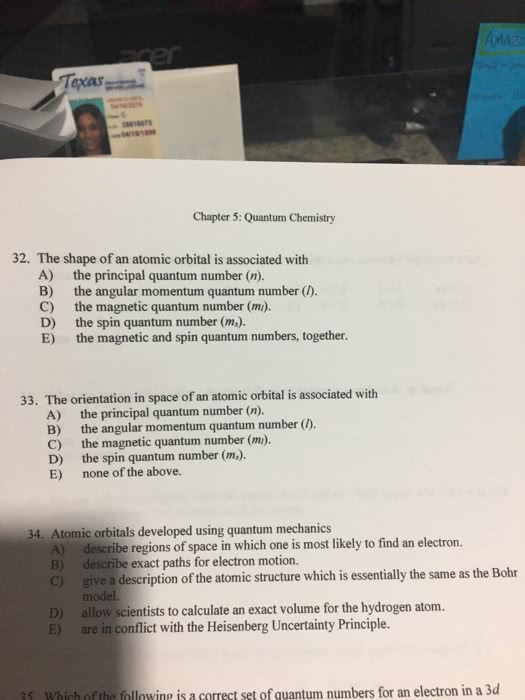CHE 110 Study Guide - Quiz Guide: Table Tennis, Beryllium, Sulfur
Document Summary
To explain the dependence of radiation emitted by objects on wavelength, planck proposed that atoms and molecules could emit (or absorb) energy in discrete quantities (quanta). Planck"s theory revolutionized physics: the advent of quantum mechanics. Planck"s work led to the explanation of the photoelectric effect by einstein, who postulated that light consists of particles called photons, and the emission spectrum of the hydrogen atom by bohr. Further advancements to quantum theory were made by de broglie, who demonstrated that an electron possesses both particle and wave properties, and heisenberg, who derived an inherent limitation to measuring submicroscopic systems. These developments culminated in the schr dinger equation, which describes the behavior and energy of electrons, atoms, and molecules: the hydrogen atom. The solution to the schr dinger equation for the hydrogen atom shows quantized energies for the electron and a set of wave functions called atomic orbitals.


